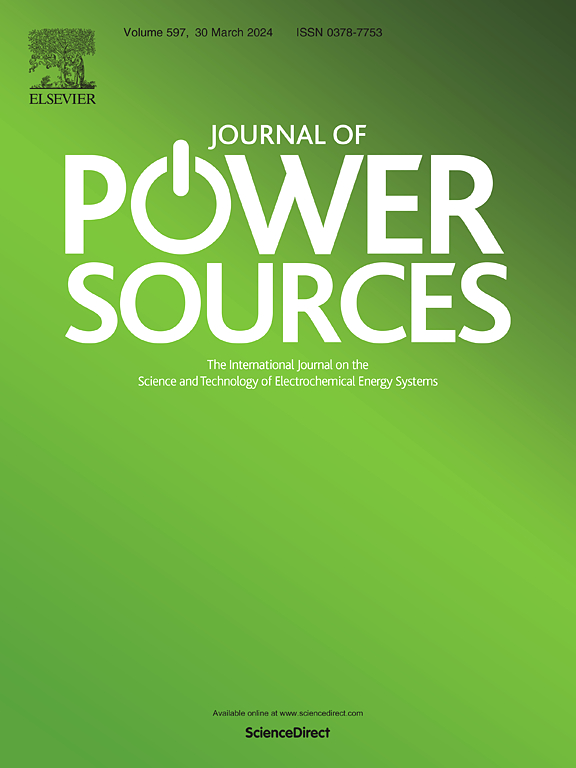Development of an efficient single-atom catalyst using a Fe/Co@MoS2-CFC anode and a BiVO4-CFC cathode for the degradation of berberine and power generation under visible light irradiation
IF 7.9
2区 工程技术
Q1 CHEMISTRY, PHYSICAL
引用次数: 0
Abstract
Antibiotics (or pharmaceuticals) have negative effects on the ecology and require efficient treatment. Here, Enhancing degradation performance of berberine(BBR) in PFC(photocatalytic fuel cell), a Fe-Co dual metal single atom species confined in MoS2 (Fe/Co@MoS2) with S-vacancy active sites was prepared and confirmed as effective photoanode in PFC with BiVO4 as cathode. The mechanism and reason for this enhancement was investigated and clarified. The increase in activity arises from the efficient separation of photogenerated carriers, enhanced by piezoelectric effect. Photocatalysis over Fe/Co@MoS2 can remove 100 % BBR within 40 min under visible light. Photocatalytic fuel cell (Fe/Co@MoS2-CFC || BiVO4-CFC) can degrade 93 % BBR with a maximum power density of 4.5 mW/m2 without additional electrolytes. Active species studies and DFT calculations reveal a mechanism that involving the synergistic effects of holes, hydroxyl radicals, and singlet oxygen. This work provides high-efficiency antibiotic treatment method and new dual-metal single-atom catalyst for AOPs(Advanced oxidation Processes).

利用Fe/Co@MoS2-CFC阳极和BiVO4-CFC阴极的高效单原子催化剂在可见光照射下降解小檗碱和发电
抗生素(或药物)对生态有负面影响,需要有效的治疗。为了提高小檗碱(BBR)在PFC(光催化燃料电池)中的降解性能,制备了一种具有s空位活性位的Fe- co双金属单原子物质(Fe/Co@MoS2),并以BiVO4为阴极,确定了其作为PFC的有效光阳极。研究并阐明了这种增强的机理和原因。活性的增加来自于光生载流子的有效分离,压电效应增强了活性。在可见光下,Fe/Co@MoS2光催化可在40分钟内去除100% BBR。光催化燃料电池(Fe/Co@MoS2-CFC || BiVO4-CFC)可以降解93%的BBR,最大功率密度为4.5 mW/m2,无需额外的电解质。活性物质研究和DFT计算揭示了空穴、羟基自由基和单线态氧协同作用的机制。本研究为高级氧化过程提供了高效的抗生素治疗方法和新型双金属单原子催化剂。
本文章由计算机程序翻译,如有差异,请以英文原文为准。
求助全文
约1分钟内获得全文
求助全文
来源期刊

Journal of Power Sources
工程技术-电化学
CiteScore
16.40
自引率
6.50%
发文量
1249
审稿时长
36 days
期刊介绍:
The Journal of Power Sources is a publication catering to researchers and technologists interested in various aspects of the science, technology, and applications of electrochemical power sources. It covers original research and reviews on primary and secondary batteries, fuel cells, supercapacitors, and photo-electrochemical cells.
Topics considered include the research, development and applications of nanomaterials and novel componentry for these devices. Examples of applications of these electrochemical power sources include:
• Portable electronics
• Electric and Hybrid Electric Vehicles
• Uninterruptible Power Supply (UPS) systems
• Storage of renewable energy
• Satellites and deep space probes
• Boats and ships, drones and aircrafts
• Wearable energy storage systems
 求助内容:
求助内容: 应助结果提醒方式:
应助结果提醒方式:


